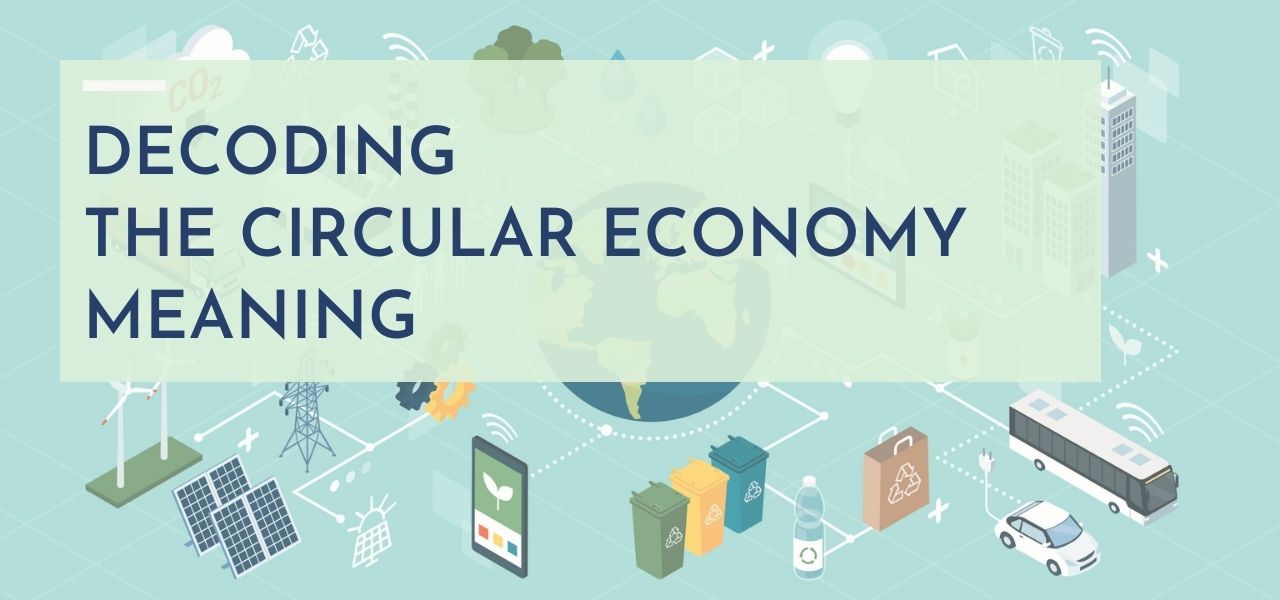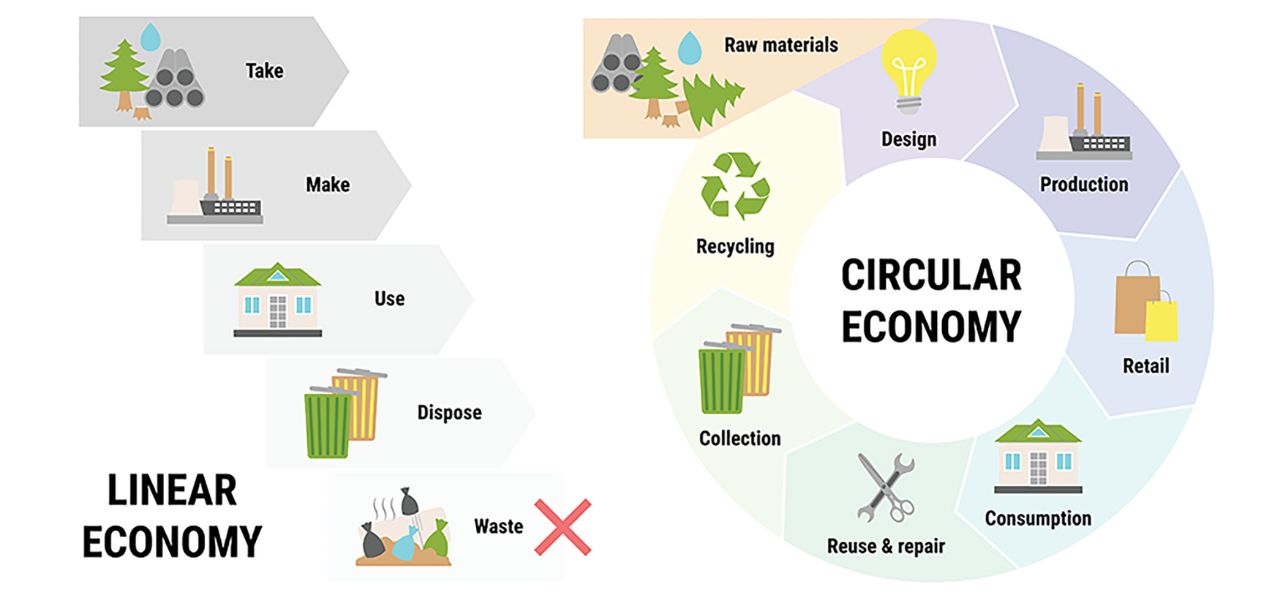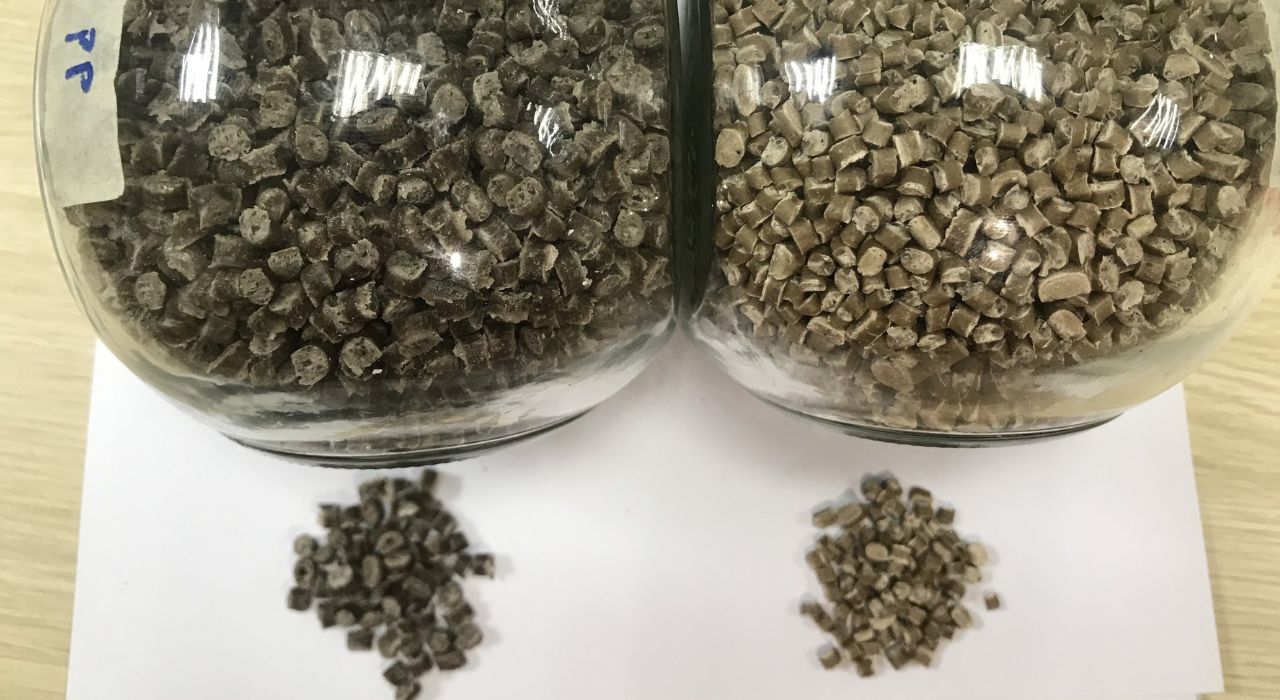Decoding the Circular Economy Meaning

The concept of the circular economy has gained widespread attention in recent years as businesses and governments look for ways to reduce waste and promote sustainability. However, many people are still unclear about the circular economy meaning and how it works in practice.
In this article, we will decode the circular economy meaning, explore successful examples of its implementation in various industries, and provide tips for businesses looking to adopt circular economy practices. Join us on this journey to discover how we can create a more sustainable future through the circular economy.
The Circular Economy Meaning
The circular economy meaning or concept was first introduced in the 1970s by economist Kenneth E. Boulding, who recognized that the planet's resources are finite and that a linear economy model, which assumes that resources are unlimited, is not sustainable. In the 1980s, the concept gained more attention with the publication of the book "Cradle to Cradle" by William McDonough and Michael Braungart.
The the circular economy meaning has been around for centuries, but it wasn't until the 21st century that it became a mainstream topic. The circular economy is a model of economic growth that aims to keep resources in use for as long as possible, reducing waste and pollution in the process.
The Circular Economy is a regenerative economic system that emphasizes the use of resources in a closed-loop system, where waste is minimized, and products are designed to be reused or recycled. The idea is to move away from the traditional linear economic model, which is based on a "take-make-dispose" approach, and instead create a circular system where materials are continually reused, recycled, or repurposed.
The key principles of the circular economy meaning include designing products and systems with circularity in mind, using renewable energy sources, minimizing waste and pollution, keeping products and materials in use for as long as possible, and regenerating natural systems.
The traditional linear economy model is based on a take-make-dispose approach, where resources are extracted, turned into products, and then discarded as waste. This model results in a linear flow of resources, with waste accumulating in landfills and oceans.
In contrast, the circular economy model aims to create a closed-loop system where resources are continually reused, recycled, or repurposed. The circular economy model is more sustainable than the traditional linear model and can lead to cost savings for businesses by reducing waste and increasing efficiency.
The circular economy meaning is a model of economic growth that is regenerative and sustainable, with the goal of reducing waste and pollution while keeping resources in use for as long as possible. The Circular Economy is not just an environmental solution, but also an economic opportunity, providing businesses with a competitive advantage by reducing costs and creating new revenue streams. By adopting Circular Economy strategies, businesses can contribute to a more sustainable and prosperous future.
Benefits of the Circular Economy
The circular economy meaning is becoming increasingly popular among businesses and policymakers alike, as a way to move towards a more sustainable and resilient future. In this section, we will explore some of the key benefits of the circular economy and provide examples of successful implementation.

- Environmental benefits:
The circular economy meaning aims to reduce waste and conserve resources by keeping materials and products in use for as long as possible. By doing so, it helps to minimize the negative impact of human activities on the environment, such as pollution and greenhouse gas emissions. Additionally, the circular economy promotes the use of renewable and low-carbon energy sources, which can further reduce our dependence on fossil fuels and mitigate climate change.
- Economic benefits:
The circular economy meaning can also bring significant economic benefits, including cost savings, and new business opportunities. By reducing waste and conserving resources, businesses can reduce their operating costs and improve their bottom line. The circular economy can also create new markets for recycled materials and products, and promote innovation in areas such as design and product development.
- Social benefits:
The circular economy meaning can have a positive impact on communities, by creating new jobs and economic opportunities, reducing pollution and improving public health. It can also promote social equity and inclusivity by providing access to affordable and sustainable goods and services for all.
There are many examples of businesses and communities that have successfully implemented circular economy principles. For instance, the Dutch company, Philips, has adopted a circular business model for its lighting products, by offering a subscription-based service to customers, where they pay for the light produced rather than the physical product. This approach not only reduces waste but also creates new revenue streams for the company.
Another example is the "closed-loop" system adopted by Interface, a global flooring company. Through this system, the company collects old carpets from customers, recycles them into new carpet tiles, and sells them back to customers. This approach has allowed Interface to reduce waste and cut its carbon emissions significantly.
Circular Economy in Practice
Circular economy meaning refers to the practice of creating a sustainable economic system that eliminates waste and maximizes resource efficiency. This concept has gained increasing popularity in recent years as the world grapples with the challenge of environmental degradation and resource depletion.
The circular economy approach involves reusing, repairing, refurbishing, and recycling products and materials in a closed-loop system. Here are some examples of how circular economy is implemented in different industries:
- Plastic: The plastic industry is also moving towards circular economy practices through the development of plant-based plastics, such as AirX, which capture carbon during the growth process, making them carbon negative. Moreover, plant-based plastics produced by AirX can also reduce waste by using by-product agriculture as feedstock.

- Fashion: In the fashion industry, the circular economy meaning is being adopted by companies to reduce waste and increase sustainability. Some companies are using recycled materials and reducing water usage, while others are incorporating take-back programs and encouraging customers to recycle old clothes.
- Technology: The tech industry is also adopting circular economy principles by designing products that are repairable and upgradable. This approach prolongs the lifespan of products, reduces electronic waste, and increases resource efficiency.
- Food: The food industry is exploring circular economy practices through initiatives like urban farming and food waste reduction. By repurposing food waste and using it as compost, businesses can reduce their environmental impact and create a closed-loop system.
To adopt circular economy practices, businesses can start by assessing their supply chain and identifying areas where waste can be reduced. They can also explore alternative materials like plant-based plastic and design products that are repairable and upgradable. Furthermore, implementing take-back programs and educating customers about recycling and reuse can also help businesses adopt circular economy practices.
>>> Learn more: Circular Economy Strategies: A Win-Win for Business and the Environment
Contact us
AirX is the world's first carbon-negative bio-material made from coffee grounds.
We specialize in producing bio-based composites using recycled carbohydrates derived from by-products such as coffee grounds, coconut husk, husk, and bamboo. Our goal is to promote sustainability through the use of eco-friendly materials.
We are always here to help and provide the best service possible. If you have any questions or would like to receive advice and feedback directly from our sales staff, please do not hesitate to contact us. You can reach us through:
- Whatsapp: +84 969 742 950
- Email: [email protected]
We look forward to hearing from you!

